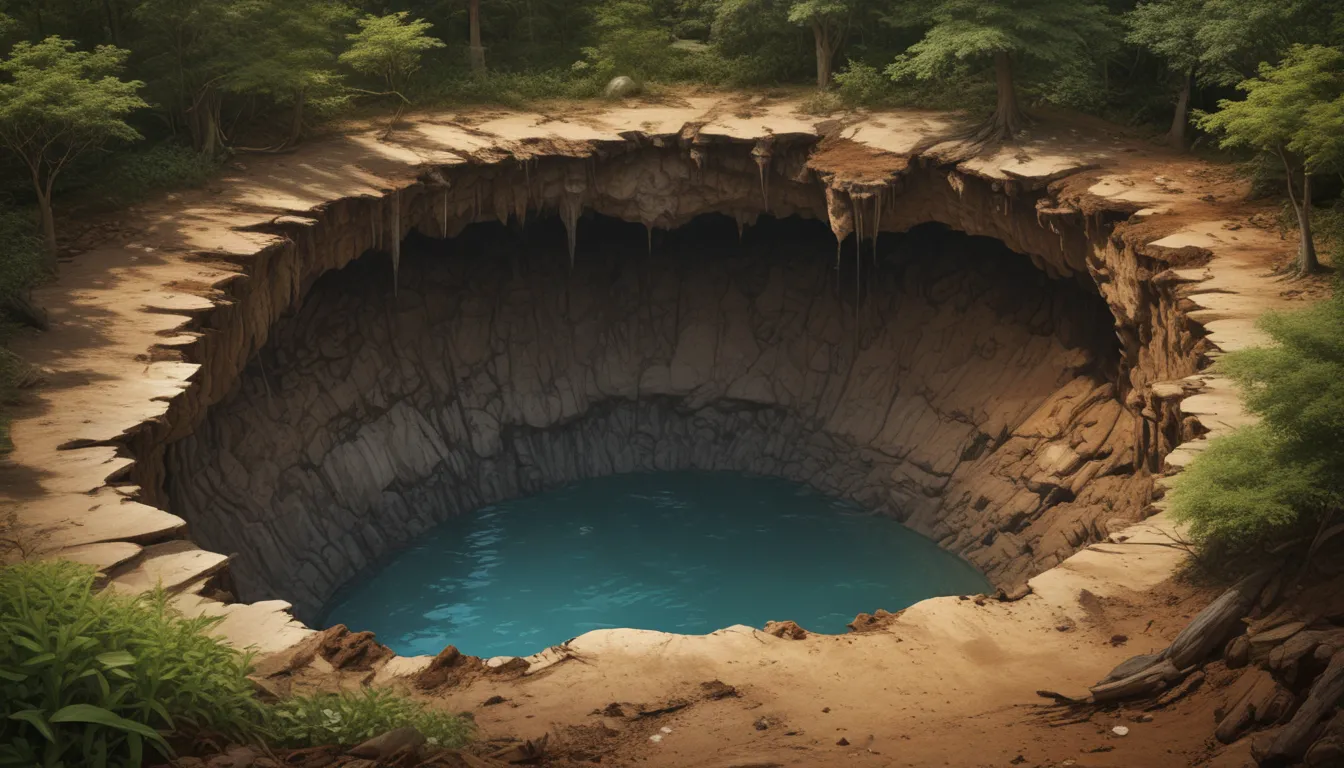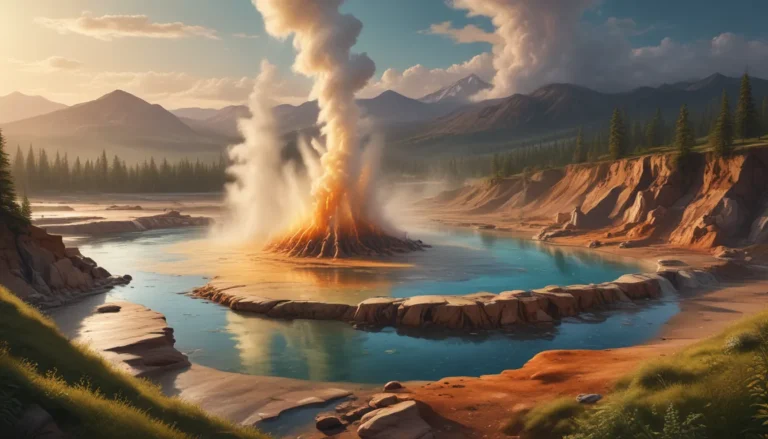A Note About Images: The images used in our articles are for illustration purposes only and may not exactly match the content. They are meant to engage readers, but the text should be relied upon for accurate information.
Sinkholes have long been a source of fascination for geologists, scientists, and curious onlookers alike. These captivating geological formations, also known as dolines or cenotes, arise when the ground collapses or sinks due to the dissolution of soluble rocks such as limestone, gypsum, or salt deposits. Join us on a journey to unveil the mysterious world of sinkholes as we uncover nine fascinating facts about these enigmatic natural wonders.
The Formation and Varieties of Sinkholes
Sinkholes can emerge naturally or as a result of human activities such as mining and construction. Ranging in size and capable of appearing suddenly, they have piqued the interest of scientists for centuries. From the collapse of underground cavities to erosion processes, sinkholes come in various types and occurrences, each holding a unique tale of geological wonder.
The Diverse Faces of Sinkholes
Sinkholes can vary in size, from small cavities measuring a few feet across to massive craters spanning several acres. The geology of the area, along with the type of underlying rocks, influences the size and characteristics of a sinkhole. While some sinkholes form gradually over time, others manifest abruptly, presenting surprising and potentially hazardous situations.
The Global Reach of Sinkholes
Sinkholes can be found worldwide, with distinct variations like cenotes in Mexico’s Yucatan Peninsula and tiankengs in China’s Guangxi Province. Prominently associated with regions rich in soluble rock types, sinkholes have left their mark in places like Florida, the Yucatan Peninsula, China, Australia, and the Mediterranean. The significance and impact of sinkholes on ecosystems and infrastructure cannot be understated, warranting vigilance and preventative measures in vulnerable areas.
The Impact of Sinkholes on Ecosystems and Structures
The occurrence of sinkholes can have far-reaching consequences, ranging from the alteration of drainage patterns to the creation of new habitats for unique species. In urban areas, sinkholes can pose threats to buildings, roads, and other structures, while also affecting groundwater flow. The potential for loss of property and life underscores the importance of monitoring and proactive measures to address sinkhole formation.
Mitigation and Remediation Strategies for Sinkholes
Various methods can be employed to address sinkhole-related issues, including filling the cavity with material, redirecting water flow, and implementing support systems in vulnerable areas. By embracing proper land-use planning and engineering practices, communities can minimize the impact of sinkholes and safeguard against potential accidents. Prevention and early detection remain key strategies in mitigating the effects of sinkhole collapses.
The Enduring Fascination with Sinkholes
Sinkholes have captivated the minds of scientists, geographers, and adventurers throughout history. The exploration of sinkholes has offered invaluable insights into geology, hydrology, and the interconnectedness of Earth’s surface and subsurface environments. As a reminder of our planet’s ever-changing nature, sinkholes stand as testaments to the complex processes that shape the world we inhabit.
Conclusion: Embracing the Wonder of Sinkholes
In conclusion, sinkholes represent fascinating geological phenomena that continue to intrigue and astound observers worldwide. From their unpredictable nature to their potential for destruction, sinkholes embody a blend of mystery and danger. By understanding the factors that contribute to sinkhole formation and taking proactive measures in susceptible areas, we can better prepare and mitigate the impact of these natural wonders. Sinkholes serve as a reminder of the dynamic forces at play on Earth, urging us to appreciate the marvels of our planet’s geological tapestry.
FAQs
- What causes sinkholes to form?
-
Sinkholes form due to various factors such as the dissolution of soluble rocks, underground water erosion, and the collapse of underground caves or mine shafts.
-
Where are sinkholes most commonly found?
-
Sinkholes are frequently found in regions with limestone, gypsum, or salt deposits, like Florida in the United States and parts of China with significant karst landscapes.
-
Can sinkholes be predicted?
-
While predicting sinkhole occurrences is challenging, signs such as ground subsidence and sudden changes in water levels can indicate potential sinkhole formation.
-
Are sinkholes dangerous?
-
Yes, sinkholes can pose risks to property and human safety, making it crucial to exercise caution in areas prone to sinkhole activity.
-
Can sinkholes be remediated?
- Sinkholes can be addressed through methods such as grouting and soil stabilization, but prevention and early detection are essential in minimizing their impact.
Enhancing Knowledge Through Collaboration
Our commitment to providing insightful and engaging content stems from the contributions of users like you. Each fact shared on our platform undergoes rigorous review by dedicated editors to ensure accuracy and authenticity. Trust in our dedication to delivering high-quality and reliable information as you delve into the realms of discovery and education with us. Let the wonders of sinkholes spark your curiosity and deepen your appreciation for the captivating mysteries of the natural world.






